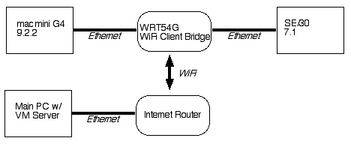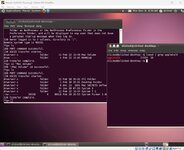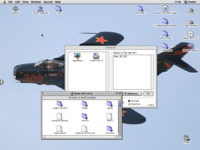It is common knowledge that one can't natively use the AppleTalk protocol (also known as DDP) over WiFi. The notable exception is very early access points, particularly Apple's AirPort series, had special packet handling to allow it to work. When WiFi became popular, AppleTalk printers were still somewhat common and it was expected to work. Nowadays, not so much.
The common explanation is that EtherTalk Phase 2 uses SNAP packets for data transfer and all WiFi traffic uses SNAP as well and converting to a wired interface screws things up. My question is, what exactly is getting mangled in the packets at the access point? I'm assuming an AirPort equipped Macintosh generate perfectly acceptable AppleTalk packets and the problem happens when the access point translates the packets into wired Ethernet. The reason I'm asking is that open source Wifi access point firmware is a thing (ddwrt, OpenWRT, Tomato, etc.) and fixing this problem might be possible. I know at least one ddwrt supported router (The Linksys WRT54G) apparently supports AppleTalk no problem with its original firmware.
The common explanation is that EtherTalk Phase 2 uses SNAP packets for data transfer and all WiFi traffic uses SNAP as well and converting to a wired interface screws things up. My question is, what exactly is getting mangled in the packets at the access point? I'm assuming an AirPort equipped Macintosh generate perfectly acceptable AppleTalk packets and the problem happens when the access point translates the packets into wired Ethernet. The reason I'm asking is that open source Wifi access point firmware is a thing (ddwrt, OpenWRT, Tomato, etc.) and fixing this problem might be possible. I know at least one ddwrt supported router (The Linksys WRT54G) apparently supports AppleTalk no problem with its original firmware.



